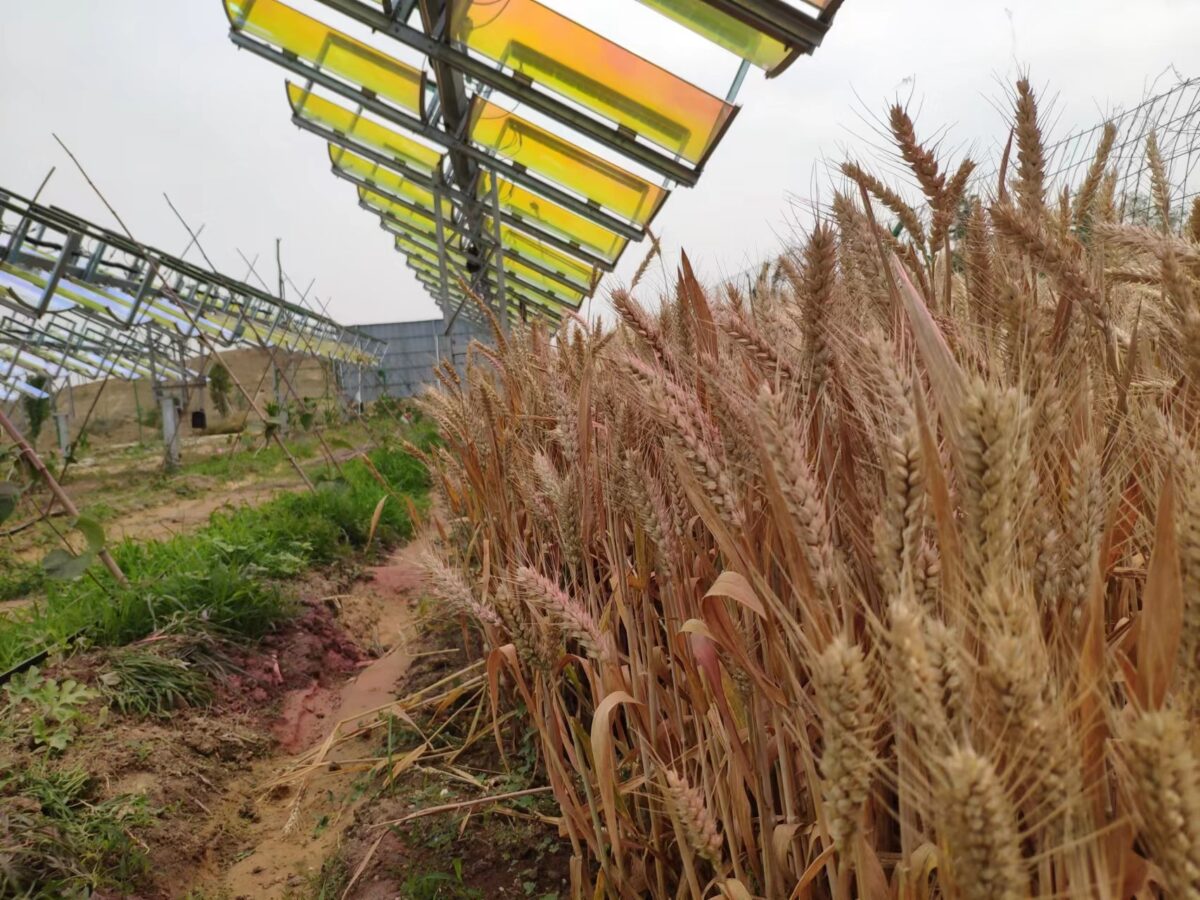Scientists led by the University of Science and Technology of China have developed a spectral-splitting concentrator agrivoltaic (SCAPV) system that can reportedly increase the crop productivity of multiple plant species.
The SCAPV system is based on the spectral separation of sunlight based on the difference in the spectral response of photovoltaics and photosynthesis. According to this principle, red and blue wavelengths are used for photosynthesis as they match the absorption peaks of plant chlorophyll, while all other wavelengths are used for concentrated power generation.
“Although multijunction III-V cells hold potential for higher efficiency, silicon cells are cost competitive for a scalable solution, and can maintain performance under high incident radiation within a concentration ratio of 3–100,” they further explained, noting that each PV module includes a front cover made of low-iron glass, a backsheet made of ethylene vinyl acetate (EVA), and a back aluminum substrate.
The researchers said the PV cells and MPFs had a cost of $0.10/W and $0.02/W, respectively, while the hardware including the concentrators and the trackers cost $0.57/W.
The group tested the performance of the system through a prototype deployed in Fuyang, in China’s Anhui province. This system occupies a surface of 422.4 square meters and relies on a dual-axis solar tracking system.
The system was found to have a PV efficiency of 9.9% and a hybrid light use efficiency of 9.05%, which the academics said is higher than the maximal theoretical photosynthetic efficiency of around 6%.
“The economic analysis shows that the LCOE of SCAPV is 0.033 $/kWh, indicating its economic feasibility,” they said, adding that the plants grown under partial sunlight showed the potential for increased biomass. “Although these tunable PVs are usually not cost competitive for now, agrivoltaics provide a niche market where they can provide advantages over conventional silicon photovoltaics and hence have the opportunity to be commercialized and improved.”
The research group unveiled its basic SCAPV system design in October. That system was tested in outdoor conditions in Anhui, and was found able to produce 107 MWh of electricity per hectare. Its overall system efficiency reached 11.6%, which the scientists said is the highest efficiency ever recorded for the spectral separation technology.
This content is protected by copyright and may not be reused. If you want to cooperate with us and would like to reuse some of our content, please contact: editors@pv-magazine.com.









By submitting this form you agree to pv magazine using your data for the purposes of publishing your comment.
Your personal data will only be disclosed or otherwise transmitted to third parties for the purposes of spam filtering or if this is necessary for technical maintenance of the website. Any other transfer to third parties will not take place unless this is justified on the basis of applicable data protection regulations or if pv magazine is legally obliged to do so.
You may revoke this consent at any time with effect for the future, in which case your personal data will be deleted immediately. Otherwise, your data will be deleted if pv magazine has processed your request or the purpose of data storage is fulfilled.
Further information on data privacy can be found in our Data Protection Policy.